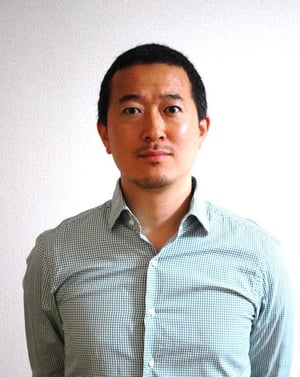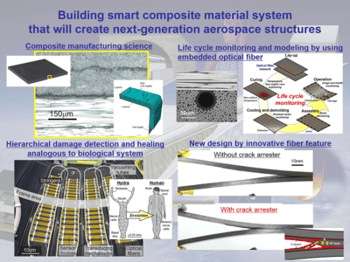TOPICS
- Research
- 2021
Young Faculty:Associate Professor Shu Minakuchi
Young Faculty /057
Associate Professor Shu Minakuchi , Department of Aeronautics and Astronautics, Minakuchi Lab.

<Biography>
Mar, 2003:Bachelor's degree, Department of Aeronautics and Astronautics, The Faculty of Engineering, The University of Tokyo
Mar, 2005:Master's degree, Department of Advanced Energy, Graduate School of Frontier Sciences, The University of Tokyo
Mar, 2008:Doctor of Science, Graduate School of Frontier Sciences, The University of Tokyo
Apr, 2008:Assistant professor, Graduate School of Frontier Sciences, The University of Tokyo
Jan, 2015:Project associate professor, Graduate School of Frontier Sciences, The University of Tokyo
Apr, 2019:Associate Professor, The Graduate School of Engineering, The University of Tokyo
<About the Research>
Advanced composite materials represented by carbon fiber reinforced plastic (CFRP) are Japan's excellent material technology, and their application to aerospace structures is expanding. However, the design and manufacturing technology is still immature. My laboratory has a foundation in material mechanics and is conducting research focusing on smart composite materials, especially by using our unique embedded optical fiber sensor technique. The goal is to build new material system technologies that will create next-generation aerospace structures.
(A) Structural life cycle monitoring using embedded optical fiber sensor
The greatest feature of optical fiber sensors is that they can be embedded inside composite materials. Just like the "nerves" in a living body, the embedded sensors allow us to visualize the mechanical state of the composite structure over its life cycle from birth to destruction. By using this technology, we are developing smart composite structures that can autonomously detect damage, for example. In addition, we are pursuing an advanced system similar to the bio-neural network that has acquired a hierarchy in the process of evolution, and have further extended it to realize a smart composite structure that can detect and heal damage.
(B) Establishing composite manufacturing science
There are many unexplained deformation phenomena in the manufacturing process of composite structures, and high-cost manufacturing is carried out based on trial and error. By using our unique optical fiber technology, we are measuring the deformation behavior during manufacturing that has not been captured so far, and reproduce the measurement result in the manufacturing simulation. Our goal is to establish a composite manufacturing science to advance manufacturing technology.
(C) Exploring new composite designs with innovative fiber features
Composite structures are currently designed using straight fibers, but the excellent mechanical properties inherent in composite materials have not been fully exploited in this design. Inspired by the material microscopic morphology and structural system that organisms have acquired in the process of evolution, we are exploring innovative composite design (e.g., interlocking fiber feature, curved fiber feature, looped fiber feature) to create next-generation composite materials.

<Future aspirations>
By organically integrating the technologies built so far, we want to establish an innovative composite structural system with high adaptability similar to that of biological structures. Specifically, by introducing three-dimensional fiber reinforced structures optimized for the force flow inside the material, the occurrence and progress of damage are suppressed, and the generated damage is immediately detected and healed.
<WEB>
Lab : https://sites.google.com/edu.k.u-tokyo.ac.jp/minakuchilab

